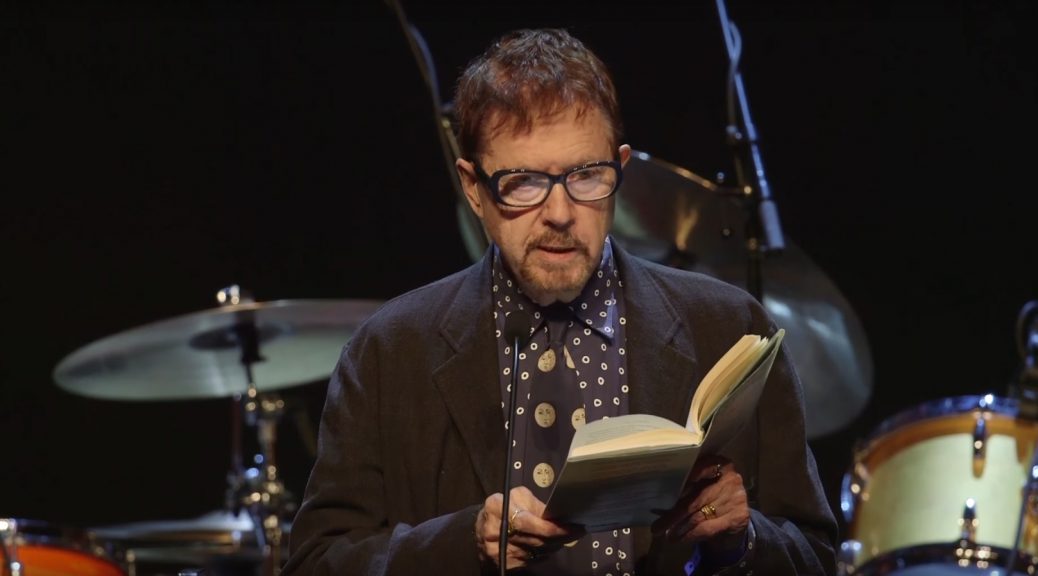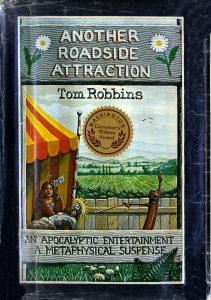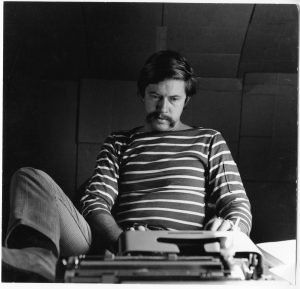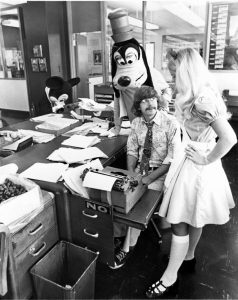
New exhibit profiles counterculture chronicler Tom Robbins
In what TIME magazine deemed “the year that changed the world,” Tom Robbins embodied the Altered States of America. Now his profile is part of a new exhibition by Legacy Washington about that pivotal year, 1968.

Robbins, 36, was an Air Force veteran, grad school dropout and journalist who quit The Seattle Times by calling in “well.” By 1968 he was mustache-deep in counterculture. He hosted a radio show called Notes from The Underground on non-commercial KRAB. He reviewed Jimi Hendrix’s homecoming concert for Helix, Seattle’s underground paper. And he had a “tent pole” idea around which he hoped to create a far-out circus of funky ‘60s characters.
Seattle’s distractions proved too much, though, for the aspiring novelist. In 1968, Robbins withdrew to tiny South Bend in Pacific County. “I finally figured if I was going to write this book, I had to get out of town,” he said.
“This book” turned out to be Another Roadside Attraction, a fantastical novel of outlaws and Buddhism, mischief and metaphysics. Rolling Stone called it the “quintessential counterculture novel.” The Los Angeles Times declared Robbins the new Mark Twain.

Hollywood adapted his second novel, Even Cowgirls Get the Blues, with Uma Thurman playing its protagonist Sissy Hankshaw. From there, his books made regular appearances on The New York Times bestseller list.
With the possible exception of Hendrix, Robbins is perhaps the top emissary of arts and letters whose rise to prominence can be traced to the Washington of the 1960s. Unlike Hendrix, Robbins is still dispensing his “joy in spite of everything” wisdom.
For Legacy Washington’s latest project, 1968: The Year That Rocked Washington, we reached out to Robbins and asked for his views about that stormy year, its legacy and lessons we might take from it.

The longtime Skagit Valley resident responded like a proud Washingtonian. He sent more than 2,000 words that weaved together the staying power of the ‘60s, his time in South Bend, Jimi’s disappointing homecoming, and the era’s demise at the hands of “boogie” culture and substances that didn’t expand the mind but fed the reptile brain.
To celebrate Robbins’ 86th birthday this week, we’re previewing his profile and essay from our upcoming exhibit, which opens Sept. 13 at the Capitol.
Ever the joy-hunter, Robbins remains optimistic about the Evergreen State in 2018 and our ability to “expand our vision, deepen our consciousness, damp down our egos.” His advice: “bless the dice and cheerfully get on with the game.”
Thank you to the sponsors of Legacy Washington’s 1968 Exhibit: Capitol City Press, The McGregor Company, University of Washington and Association of Washington Businesses.



